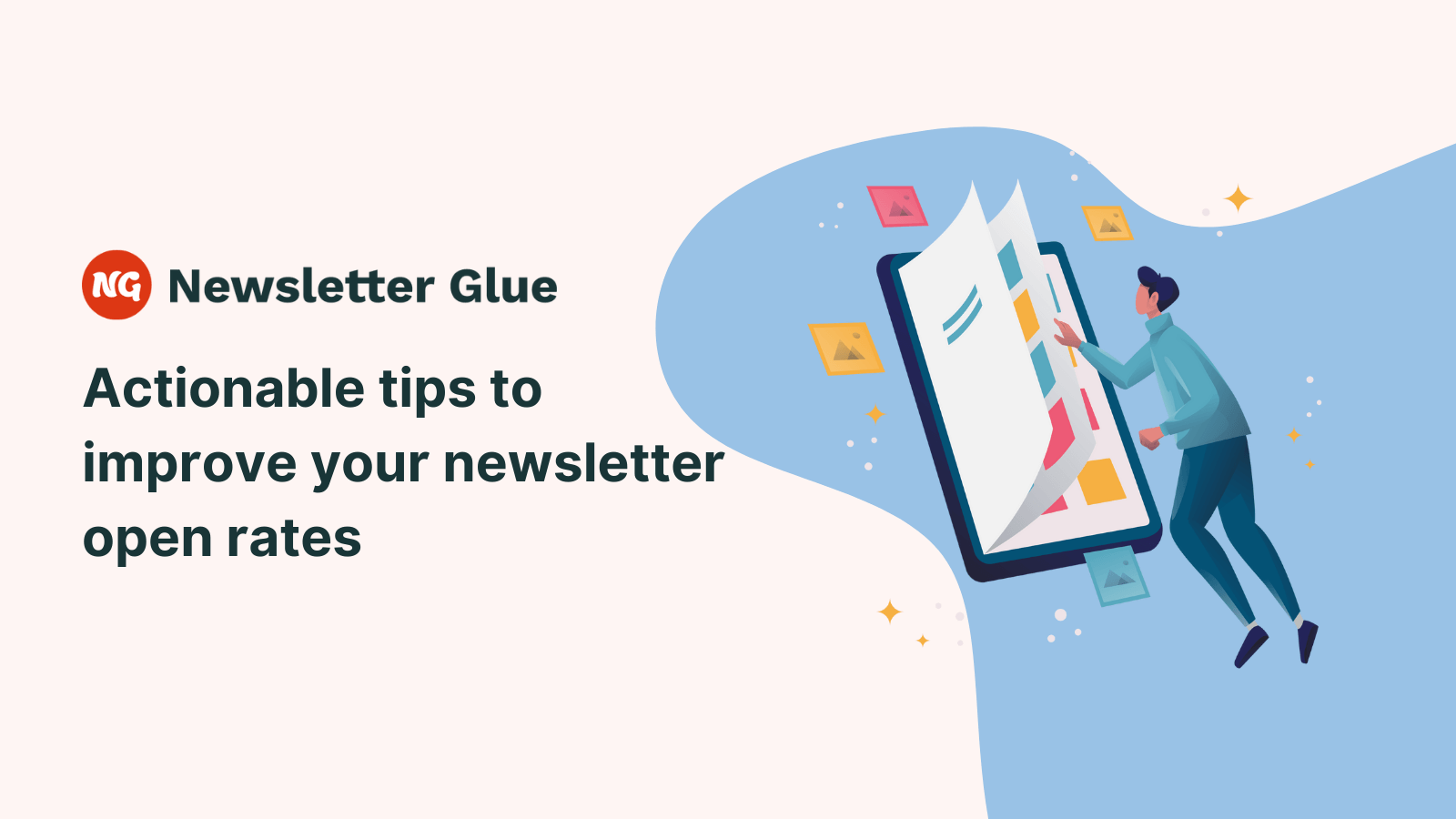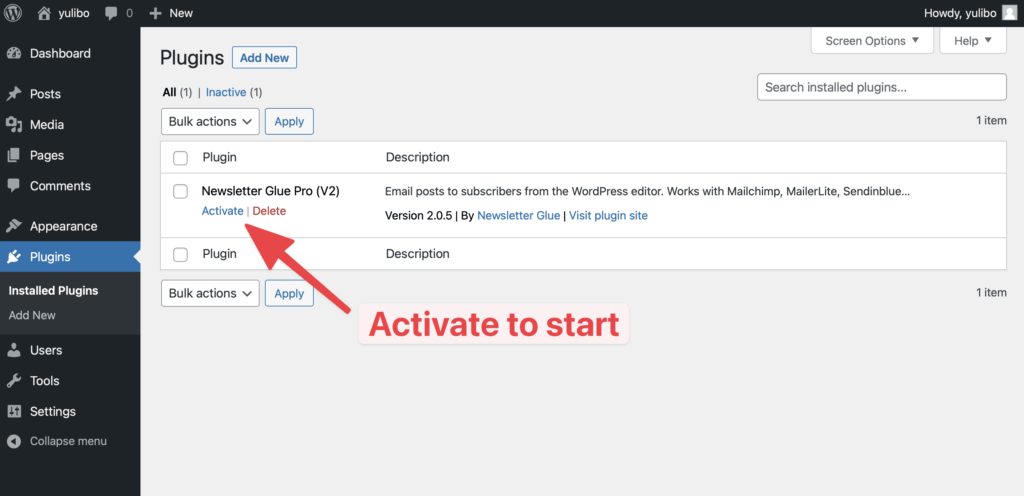Are you looking for ways to improve your newsletter open rates?
A high open rate means people are actually reading what you’re sending them. Readers who are engaged are more likely to read the rest of your newsletters and take action, such as clicking a link or making a purchase.
In this article, we’ll share some actionable tips that’ll get more people to open your emails and read the content you send.
What is the average open rate across different industries?
Open rates can vary significantly by industry, with some sectors seeing open rates as high as 60% and others as low as 15%. However, according to Campaign Monitor, the average open rate across most industries is typically between 20-25%.
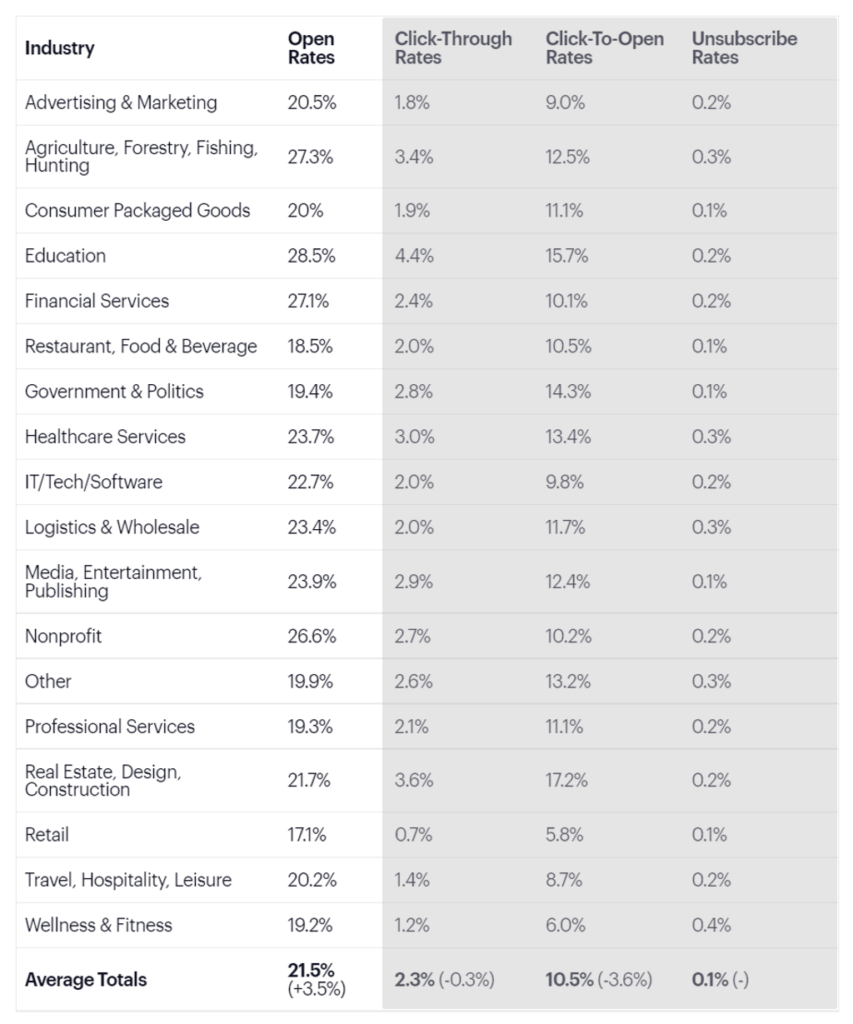
The open rates of newsletter marketing emails vary a lot depending on different factors such as time and day it arrives, as well as whether it is read on desktop or mobile.
Open rates of emails sent on weekends are usually lower than emails sent on weekdays. In addition, the open rate of emails received on a desktop computer is usually much lower than email opens from mobile devices.
Your open rates might be lying to you
Recent privacy updates from Apple have made it hard to trust the email open rate metric.
After the iOS15 update, all tracking pixels are opened by default in the Apple Mail app. This means that any subscribers using Apple Mail will appear to have opened your emails.
The way to think about this is to segment out your Apple Mail users, then use the open rates for your remaining subscribers as a gauge for your average open rates.
Another impact of this is to make sure you segment out Apple Mail users before you run any open rate-driven automations. Alternatively, simply avoid open rate-driven automations altogether as they can be untrustworthy.
Finally, keep in mind that while open rates are a good indicator of interest in your emails, they shouldn’t be the only metric you look at to determine the success of your email marketing campaigns.
You can read more about the Mail Privacy Protection (MPP) by Apple in this extensive documentation by Simon Harper.
Even after all the mess that Apple privacy update has created, open rate is still an important metric to track engagement. And to help you improve it, below are some of the actionable tips that you can implement.
9 Actionable tips to improve your newsletter open rates
The average person receives 121 emails per day and only has time to open and read about 28% of them. Although newsletter open rate vary by industry, there are a few factors that can help you improve it.
Let’s take a look at each of the 9 actionable tips for increasing newsletter open rates one by one.
1. Keep your subject lines short and to the point
The subject line is the first thing people see when opening an email. You want it to be clear, concise, and to the point so that the subscriber knows what they’re opening.
People hate reading long, wordy subject lines. Studies have shown that subject lines with 6-10 words have 21% open rates.
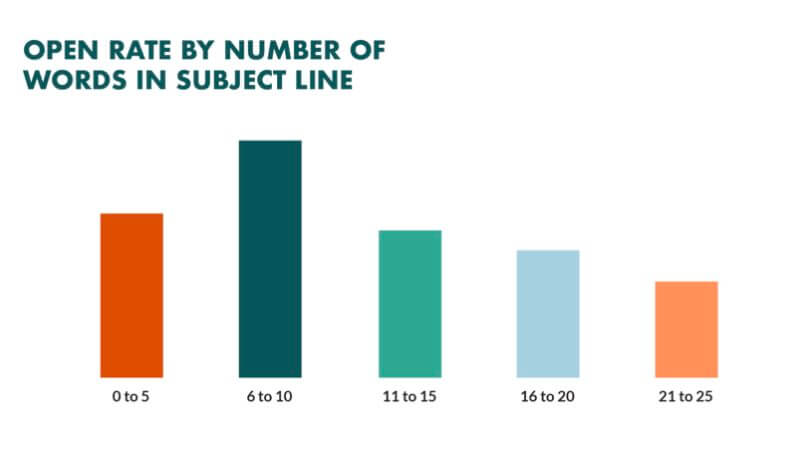
As most people check emails on their phones, you should aim for anything less than 6 words to fit the limited screen space on a mobile.
Subscribers are more likely to open your emails if their subject lines are relevant to them and their interests.
2. Write preview text that hints at what’s inside the email
The preview text is the short text that appears beside the subject line of an email. It allows subscribers to get a quick overview of the newsletter content before they click through to read the full newsletter.

While the subject line is the most important element in getting recipients to open your email, the preview text can be a close second.
It’s important that you always write a preview text that’s short, sweet, and to the point so that it piques the recipient’s interest and encourages them to open the email. A small effort can make a big difference.
3. Use a sender name that subscribers can easily recognize
Many times, people will only open emails from the people they know or from brands with whom they interact.
It’s important to have a clear and easy-to-remember sender name so that your subscribers can easily recognize it. This could be your brand name, your personal name, or a combination of both.
For personal newsletters, you can use your full name, whereas, for business newsletters, you can use [first name] at [brand name]. You should also be mindful of the length, as most email clients only display 20-30 characters.
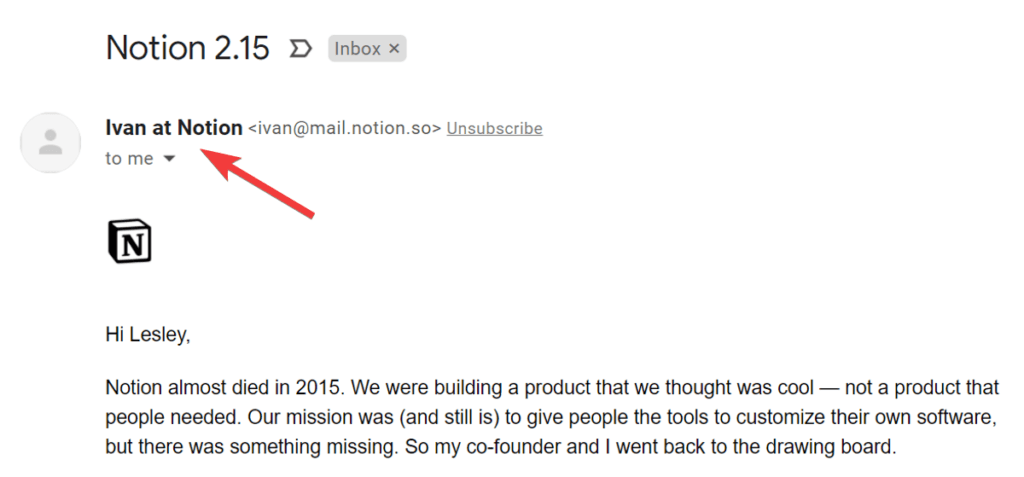
In addition to this, you can also show your profile photo or logo in the inbox by adding a BIMI record. To learn more, you can read the guide from MXToolbox on setting up a BIMI record.
4. Personalize your subject lines
You may have the best email content in the world, but if your subject line is weak, nobody will ever see it. That’s why, in addition to keeping it short, it’s important to personalize your subject lines to help improve open rates.
Think about it this way: if you receive an email with a subject line that says “Hey!”, are you more likely to open it or an email with a subject line that says “Hey [First Name]!”?
When you personalize your subject lines, you are showing your recipients that you know who they are and that you are speaking directly to them. This simple change can make a big difference in your newsletter open rates as it’ll pique their interest and make them want to open the email.
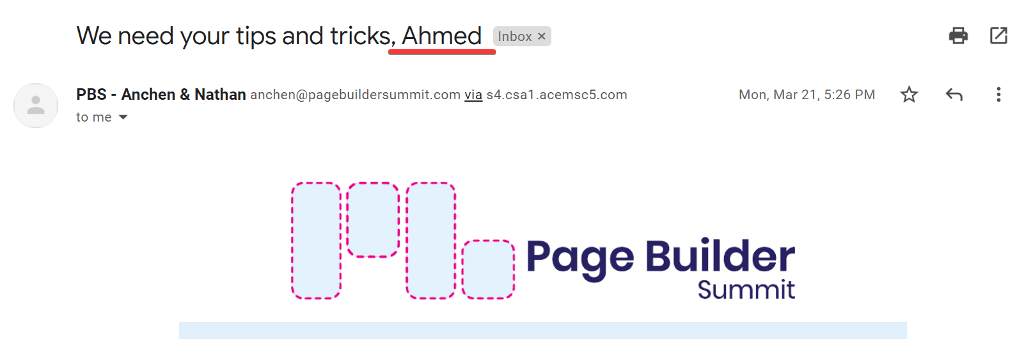
Of course, you don’t want to go overboard with the personalization. If every email you send has the same exact subject line, it’s going to annoy your subscribers. Instead, you can mix it up a bit and use personalisation once in a while.
These personalized subject lines make your emails more relevant to each recipient and will help significantly boost your open rates.
5. Use emoji in subject lines
Branded emails have become a massive trend in recent years. You can make your subject line branded by including an emoji in it.
Emojis help draw attention to your emails, add a little personality, and make them stand out in a crowded inbox, which encourages recipients to open them.

In addition, emojis can help convey the tone or message of your email, making it more likely that recipients will understand and open your email.
However, it’s important to use emojis sparingly to make sure they complement, rather than replace the text in your subject line.
6. Segment your subscribers to send relevant content only
One of the common reasons people don’t open your email is that it may not be relevant to them. According to Mailchimp, segmenting your subscribers results in a 14.31% higher open rate than non-segmented newsletter campaigns.
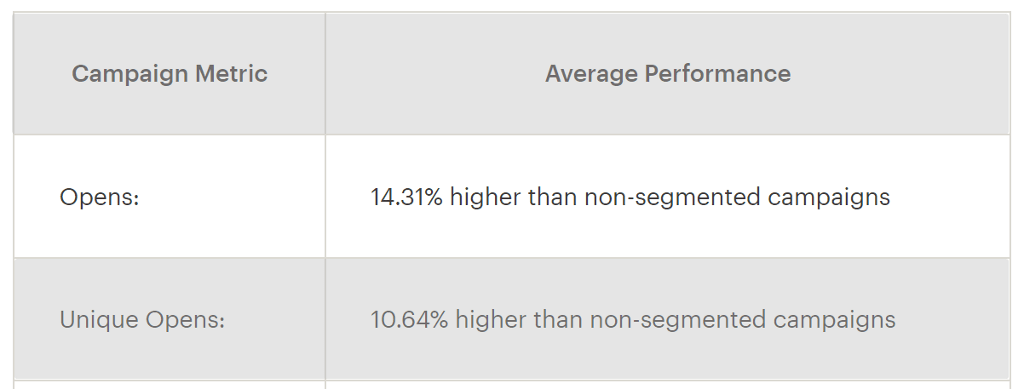
Segmenting your subscribers is one of the best ways to boost your newsletter open rates as it allows you to send relevant content to only those who will find it interesting. Subscribers are more likely to open content that is relevant to them.
Most of the popular email marketing services let you add different tags based on the behavior of your subscribers.
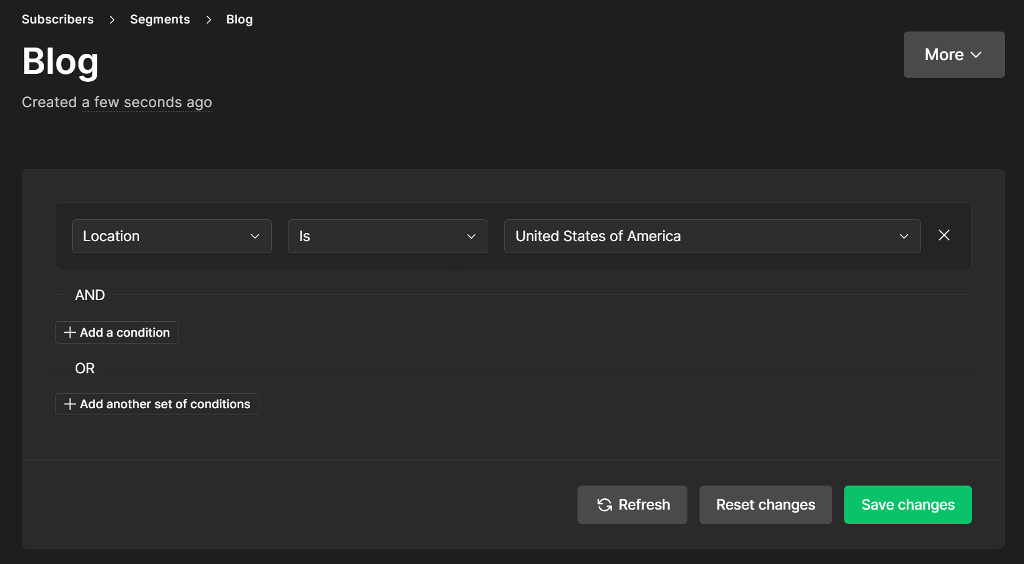
You can segment your subscribers based on their interests, their location, their purchase history, source of signup and even by their engagement.
7. Test send day, send time, and send frequency
The day of the week and time of day that you send your newsletter can have a big impact on whether or not it gets opened. Timing is everything in email marketing and the best time to send your emails is when your subscribers are likely to be online.
When it comes to the days, according to Campaign Monitor, weekdays are the best days to send email newsletters with Mondays being the best day of all with an average open rate of 22%.
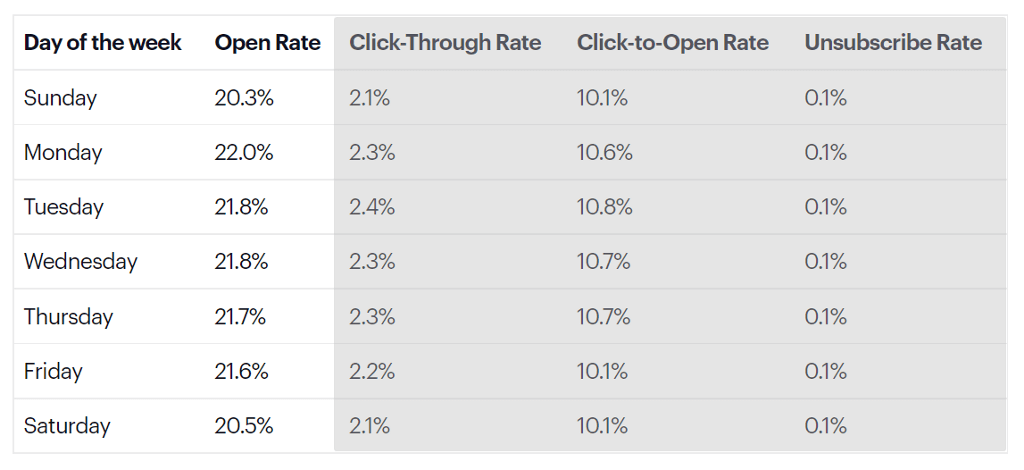
When it comes to time, most email marketing software platforms let you schedule your emails for when your subscribers are most likely to read them.
In addition to day and time, the frequency of your email send can also impact the newsletter open rates. If you’re sending too many emails, your subscribers may become overwhelmed and unsubscribe from the list. On the other hand, if you don’t send enough emails, your subscribers may forget about you and not open the emails.
8. Send plain text emails
Most newsletters these days are rich HTML containing images and other design elements. While these look nice and are eye-catching, plain text emails often outperform HTML.
There are a few reasons for this. First, plain text emails are much less likely to be caught by spam filters. Second, plain text emails are generally quicker to load, especially on mobile devices. And third, plain text emails tend to create a more personal and intimate connection with the reader.
We have marketers like Neil Patel and Brian Dean who send plain text newsletters as a part of their email campaigns.
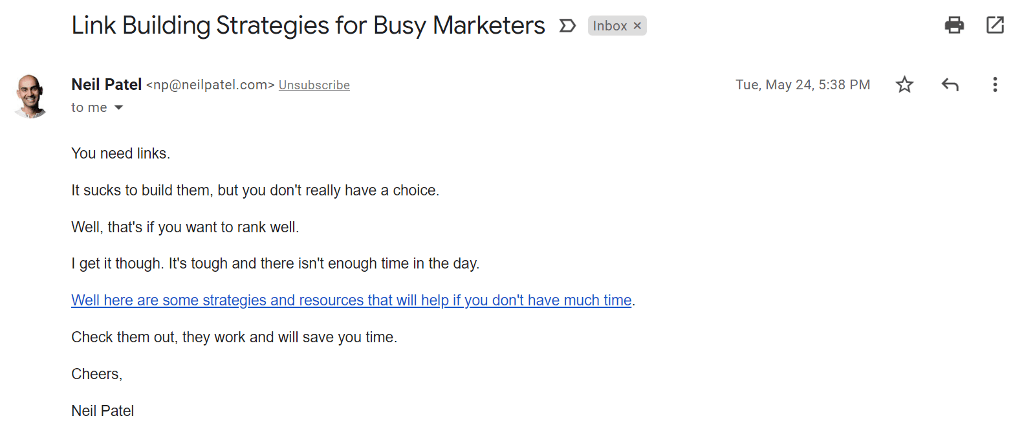
9. A/B test your subject lines
If you’re finding it difficult to decide on the best subject lines for your emails, you can A/B test each subject line to see which one works best for your audience.
Most email marketing services such as MailerLite, Mailchimp and Campaign Monitor come with a built-in feature to A/B test subject lines.
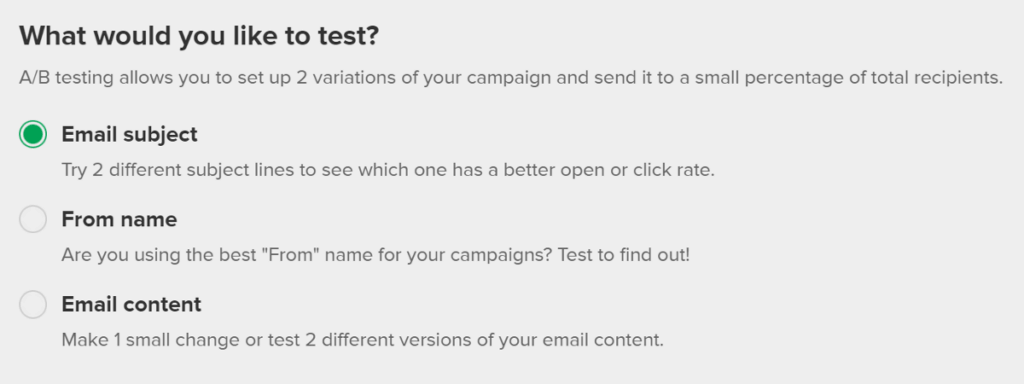
You can pilot run the A/B test for a few of your most engaged subscribers to see which one is getting the most open rate and engagement. That way, you can find the best subject lines to boost your open rates and increase your email engagement.
That’s all! These actionable tips will help you significantly improve your newsletter open rates and ensure that your subscribers see the content you send them.
Other important engagement metrics
Other than open rate, you should keep an eye on other engagement metrics such as click rate and reply metric. Click rate measures how many people are clicking on links within your email, and reply engagement measures how many people are replying to your emails.
Both of these metrics are solid indicators that give you insights into how your email campaigns are performing and whether or not people are actually engaged with your content.
Conclusion
Your email open rate is an important metric for determining the engagement of your subscribers, but it shouldn’t be the only thing you look at. You can follow the simple tips we’ve shared above to pique your readers interest and make a good first impression with your emails.
Here’s a recap of the actionable tips that we’ve shared:
- Keep your subject lines short and to the point
- Write preview text that hints at what’s inside the email
- Use a sender name that subscribers can easily recognize
- Personalize your subject lines
- Use emoji in subject lines
- Segment your subscribers to send relevant content only
- Test send day, send time, and send frequency
- Send plain text emails
- A/B test your subject lines

